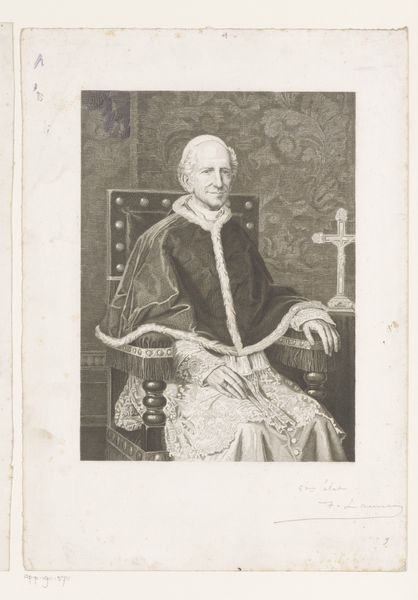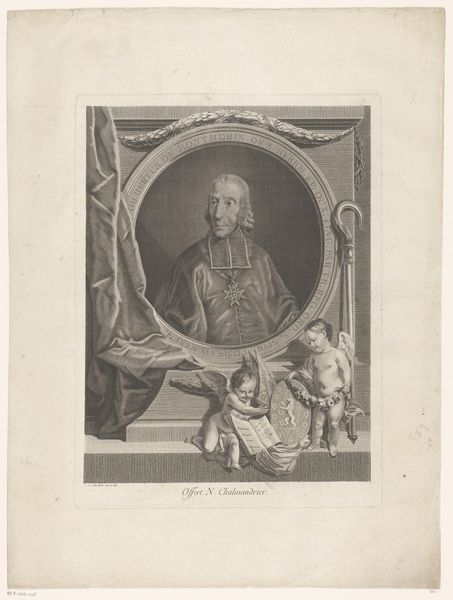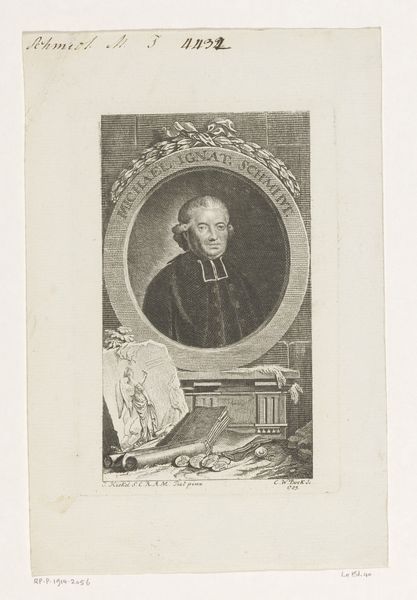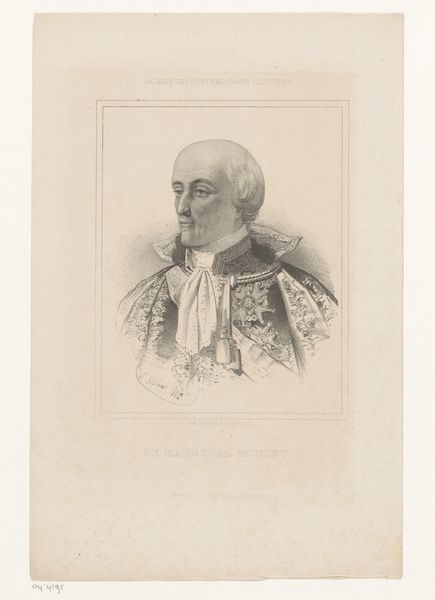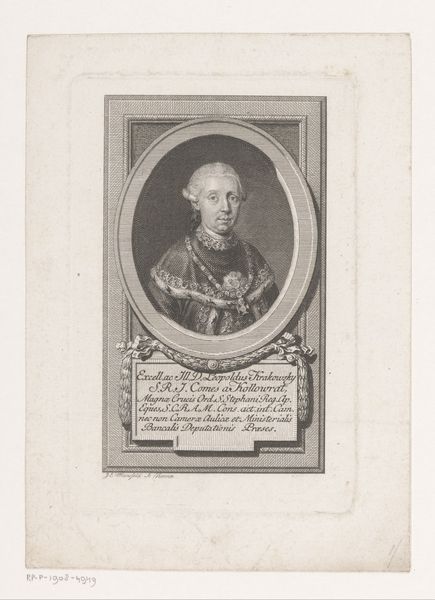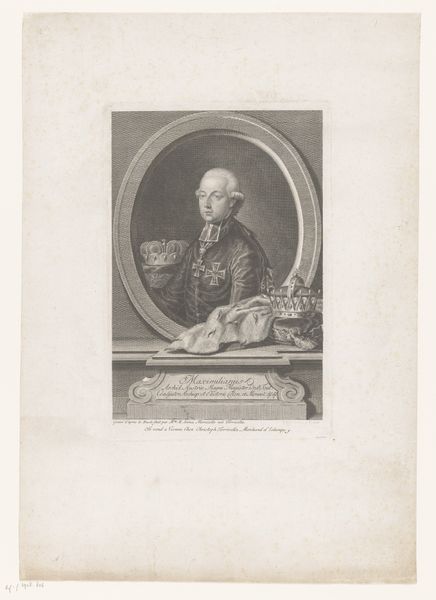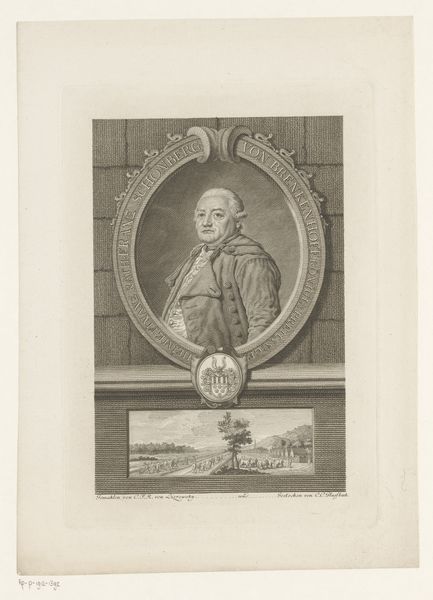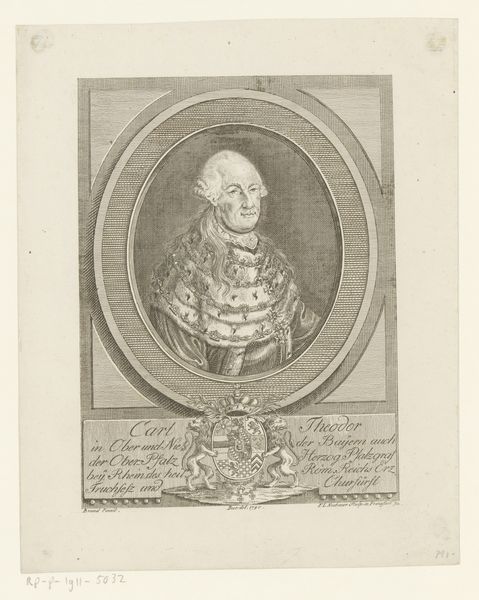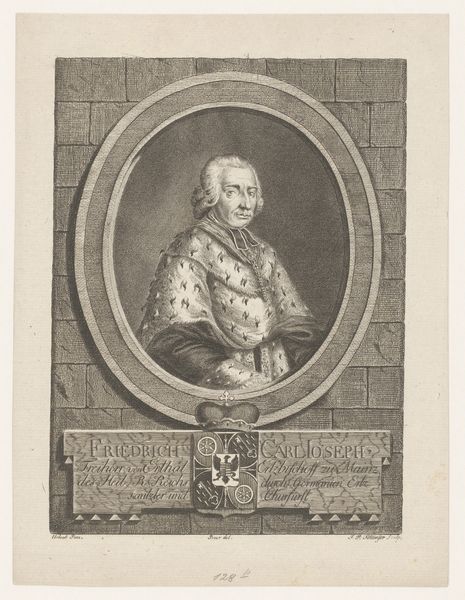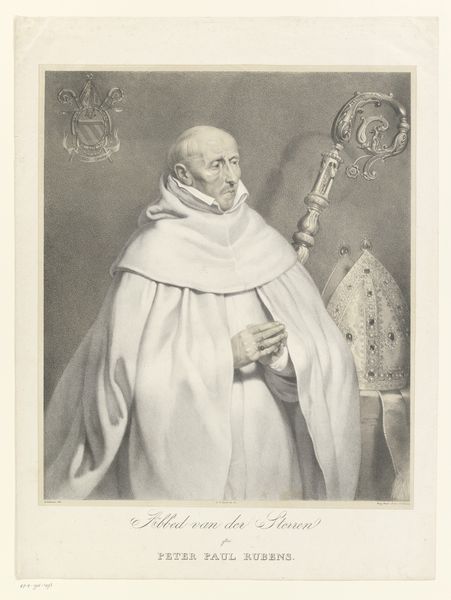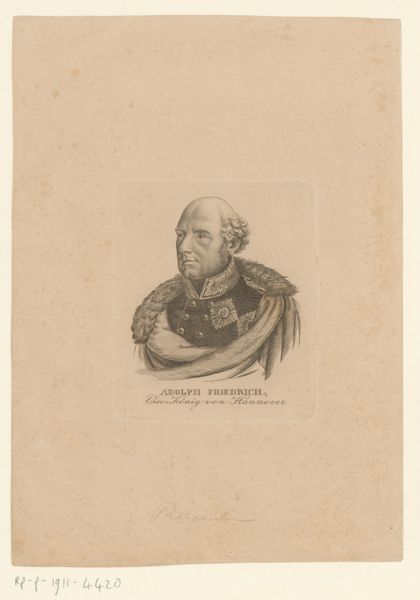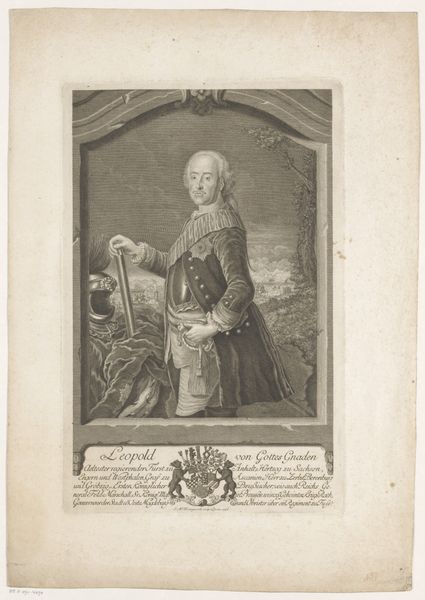
#
photo of handprinted image
#
light pencil work
#
pastel soft colours
#
yellowing background
#
photo restoration
#
ink paper printed
#
light coloured
#
white palette
#
positive shape
#
soft colour palette
Dimensions: height 351 mm, width 258 mm
Copyright: Rijks Museum: Open Domain
Frans Lauwers made this portrait of Pope Leo XIII using engraving, a printmaking technique, sometime between the late 19th and early 20th century. With engraving, a design is manually cut into a metal plate, traditionally copper, using a tool called a burin. The incised lines are then filled with ink, and the plate is pressed onto paper, transferring the image. The fineness of the lines defines the tonal range and the degree of detail achieved. This explains the sharp clarity and precision of the image, and the intricacy of details such as the lace of the Pope's rochet, and the folds of his mozzetta. Engraving was a skilled, laborious process. The engraver needed not only artistic talent but also technical mastery. The production of prints such as this one was deeply embedded in systems of labor and patronage. It was also a reproductive medium, making images accessible to a wide audience. When we appreciate the labor and skill embedded in this print, it invites us to see the making as integral to its meaning.
Comments
No comments
Be the first to comment and join the conversation on the ultimate creative platform.
